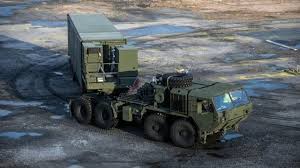
The United States keeps its Typhon missile system stationed in the Philippines despite strong objections from China and Russia. This decision has sparked a heated debate about regional security and the potential for an arms race in Southeast Asia.
The Typhon missile system, which can be equipped with advanced cruise missiles, has a range exceeding 1,600 kilometers. This capability allows it to strike targets across the region, including Taiwan. As a result, the deployment of this system has raised alarms in Beijing. A spokesperson for the Chinese Foreign Ministry stated that the Typhon missile system “seriously threatens the security of regional countries and intensifies geopolitical confrontation.”
US and Filipino forces are actively training with the Typhon system in response to these concerns. This collaboration strengthens military ties between the two nations and enhances the Philippines’ defense capabilities. Furthermore, it serves as a deterrent against potential aggression from China in the South China Sea.
While the US maintains that the deployment is for defensive purposes, critics argue that it exacerbates regional tensions. Russia has also condemned the move, accusing Washington of provoking an unnecessary arms race. The Kremlin’s stance aligns with China’s, highlighting a growing alliance between the two nations against US influence.
A senior government official in the Philippines emphasized the strategic importance of the Typhon system. He stated, “If ever it will be pulled out, it is because the objective has been achieved.” This remark underscores the Philippines’ commitment to enhancing its defense posture amid rising threats. The official did not elaborate on what those objectives might be, but it is clear that the presence of the Typhon system serves a crucial role in regional security.
To understand the implications of this deployment, it is essential to consider the broader geopolitical landscape. The US’s decision to maintain the Typhon system reflects a long-standing strategy to counter China’s growing military assertiveness. Moreover, as a US ally, the Philippines benefits from enhanced military technology and training. These advantages bolster its capabilities in the face of potential aggression.
However, this situation also raises questions about the long-term consequences of such military deployments. Critics warn that maintaining the Typhon system could lead to an escalation of tensions, not only between the US and China but also among other nations in the region. As countries assess their security needs, the potential for an arms race looms larger.
In conclusion, the US’s decision to keep the Typhon medium-range missile system in the Philippines is a significant move in the ongoing geopolitical chess game. While it provides strategic advantages for the Philippines and serves as a deterrent against China, it also invites criticism and concern from China and Russia.



